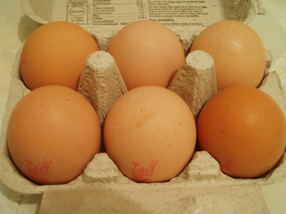|
A few words here about red meat.
We have all heard for decades that red meat is unhealthy. The original recommendation by the medical community to reduce red meat consumption was based on the (now false) assumption that dietary animal fat was the chief cause of obesity, and heart disease. However, while it is now clear that animal fat (including the fat in beef) is actually healthy in small amounts, good studies continue to link regular consumption of red meat with increased risk of cardiovascular disease. Why? Red meat is high in a particular compound called carnitine which is synthesized from two amino acids (methionine and lysine). Certain gut bacteria feed on carnitine producing a waste product which is turned into something called TMAO. Recent studies have shown that high levels of TMAO cause tiny puncture wounds form along the cells lining our arteries (the endothelium). These endothelial wounds are the initiating event for plaque formation (atherosclerosis). Humans and animals who eat red meat regularly have higher levels of TMAO which is directly associated with atherosclerosis and increased risk of heart attack. Should we avoid carnitine then? Not so fast. Carnitine is an essential compound used by all cells of the body for energy and for fatty acid metabolism. It helps muscles heal after injury and intense workouts. Carnitine plays a vital role in health. But like any healthy substance, too much of it can become a problem. Too much carnitine over time results in too much TMAO. TMAO levels do not go up after eating red meat in people who only eat it occasionally. Vegans given meat/carnitine do not show a rise in TMAO levels because the bacteria which feed off of carnitine die off after prolonged periods without carnitine to sustain them. Animals fed a diet rich in carnitine over time show the same rises in TMAO and the same endothelial ulcers as do humans. However, if these animals are given bacteria-killing antibiotics prior to being fed carnitine, TMAO levels remain low, supporting the idea that gut bacteria are the source of the TMAO. In a nutshell, certain gut bacteria feed on carnitine which leads to production of TMAO, which in turn damages our blood vessels. This is what makes regular consumption of red meat (the most potent source of carnitine) a risky dietary behavior. READ ON: Red Meat and Cancer
1 Comment
Fish, beef, pork, chicken, turkey, and lamb meats are also sources of complete protein. In fact, any food that comes from an animal (eggs, meats, yogurt, cheese, etc.) is a good source of protein. Chicken meat is high in healthy protein, but chicken fat is not so healthy. High in Omega-6 fatty acids (O-6FAs), the fat from chicken is converted into a pro-inflammatory acid (arachadonic acid) which promotes aging and disease. This will be discussed below in the section on fats.
Read On: A Few Words About red Meat  Are eggs really good for me? You may have been told (possibly even by a doctor) that eggs are to be limited because their yolks contain cholesterol. However, data over the last 25 years has proven that the amount of cholesterol in eggs is tiny compared to the amount that we manufacture (in our livers) naturally each day. What’s more, cholesterol/fat from our diet is not the cause of high serum cholesterol (the cholesterol measured by blood tests which is associated with chronic diseases). In fact, fat from healthy animals is healthy to eat in small to moderate amounts, is not a contributor to high blood cholesterol, and can even be helpful in lowering serum cholesterol and reducing our risk for chronic diseases. I will speak about this in some detail later in this essay in the section on fats. Read on about Protein in the next article: Animal Sources of Protein Protein Biochemistry and NutritionProtein biochemistry: Proteins are big molecules made up of smaller molecules called amino acids linked together to form long chains. Each protein is defined by its unique sequence of amino acids repeated over and over in its chain. Each repetition of a protein’s unique amino acid sequence causes the chain to bend or fold and this determines the shape (and function) of the protein. Some proteins give structure to cells and tissues like the collagen and keratin that give smoothness and elasticity to our skin and strength to our hair; others are for mechanical functions like the actin and myosin which enable muscles to contract and relax; proteins called enzymes help chemical reactions to take place throughout the body; immunoglobulins are proteins that help carry out the work of our immune systems. And these examples form just the tip of the protein iceberg. Virtually every important function of the body is run by proteins which in turn are made up of repeating sequences of amino acids.
Protein and nutrition: There are 20 different amino acids. Some amino acids can be made inside our own cells, while others have to be captured through our diets. Amino acids that we cannot make ourselves are called essential amino acids. There are 9 essential amino acids that we must consume regularly in order for our bodies to make all the different types of proteins necessary for optimal health. Some foods contain what are called complete proteins. Complete proteins contain all 9 essential amino acids in their sequences. From a dietary standpoint, foods with complete proteins are especially healthy. Eggs are the best example of a food containing complete protein, and eggs from an organic, pasture-raised chicken are among the healthiest foods in the Human Diet. Read the next article : Are eggs really good for me? |
AuthorArchives
August 2021
Categories
All
|


 RSS Feed
RSS Feed